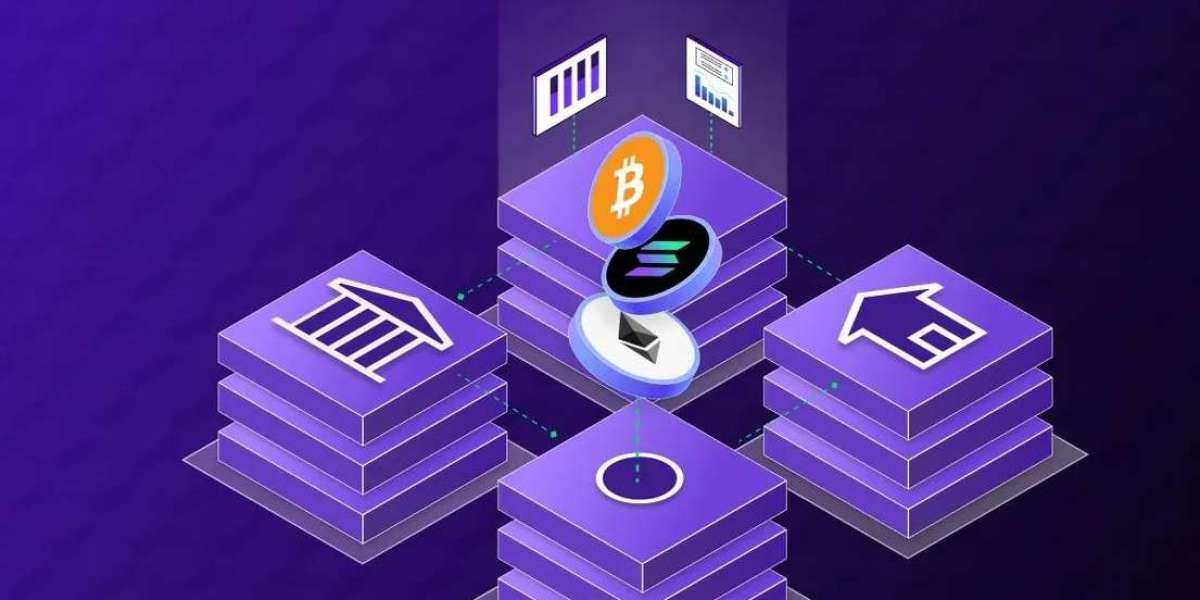In the rapidly evolving digital economy, asset tokenization platform development is emerging as a groundbreaking force, revolutionizing the representation, trading, and accessibility of assets across borders. By converting ownership rights of physical or intangible assets into digital tokens on a blockchain, this innovation is reshaping global trade, unlocking unprecedented liquidity, and lowering barriers to entry for investors worldwide. From real estate to fine art, commodities to intellectual property, asset tokenization is making once-illiquid markets accessible to a global audience in real time.
Understanding Asset Tokenization
At its core, asset tokenization involves creating a digital representation of an asset on a blockchain. These tokens can represent fractional ownership, allowing multiple investors to hold a share in a high-value asset. Unlike traditional methods that require extensive paperwork, intermediaries, and settlement delays, blockchain-enabled tokenization ensures faster transactions, greater transparency, and lower operational costs.
Key Benefits Driving Adoption
- Fractional Ownership – Investors can own smaller portions of high-value assets.
- Improved Liquidity – Markets become more accessible, allowing faster buy/sell transactions.
- Global Access – Borders become irrelevant, enabling worldwide participation.
- Reduced Costs – Eliminating intermediaries and manual verification reduces transaction fees.
- Transparency & Security – Blockchain technology ensures secure, tamper-proof records.
Asset Tokenization and Its Impact on Global Trade
Global trade is built on trust, value exchange, and accessibility three areas where asset tokenization has a direct influence.
- Faster Settlement Times: Traditional cross-border transactions can take days; tokenized assets can settle in minutes or seconds.
- Lower Transaction Costs: Blockchain reduces the need for multiple intermediaries such as clearinghouses and escrow services.
- Access to New Markets: Businesses in emerging economies can attract international investors more easily.
- Reduced Currency Risks: With tokenized assets often tied to stablecoins, volatility in foreign exchange markets can be mitigated.
Liquidity Transformation Through Tokenization
Liquidity the ease with which an asset can be bought or sold without affecting its price is critical for both investors and businesses. Traditionally, certain assets, such as real estate, art, or private equity shares, have been notoriously illiquid. Asset tokenization changes this by enabling fractional sales to a wider pool of investors.
Example:
Imagine a $20 million commercial building in New York. In traditional finance, selling it requires finding a buyer with deep pockets. With tokenization, the building can be split into thousands of tokens, each representing a small fraction of ownership, and sold to investors worldwide within minutes.
Industries Disrupted by Asset Tokenization
- Real Estate – Tokenization enables fractional property investments and secondary market trading.
- Art and Collectibles – Multiple stakeholders can own high-value artwork.
- Commodities – Precious metals, oil, and agricultural products can be tokenized for easier trading.
- Venture Capital & Private Equity – Equity shares can be tokenized for faster fundraising.
- Intellectual Property – Patents and trademarks can be monetized more efficiently.
The Economics Behind Asset Tokenization
When considering adoption, businesses often evaluate the asset tokenization platform development cost, which can vary depending on factors like:
- Type of Asset (real estate, commodities, art, etc.)
- Blockchain Protocol (Ethereum, Polygon, Hyperledger, etc.)
- Compliance and Regulatory Integrations
- Smart Contract Complexity
- Security Features (multi-signature wallets, KYC/AML integration)
- User Interface and Accessibility
A high-quality tokenization platform can significantly reduce long-term operational expenses by automating processes and minimizing human errors, making the initial investment worthwhile.
Best Tokenization Platform for Financial Services
For banks, wealth management firms, and fintech companies, selecting the optimal tokenization platform for financial services is crucial. The right platform should provide:
- Regulatory Compliance – Adhering to local and international laws.
- Interoperability – Supporting multiple asset classes and blockchains.
- High Security Standards – End-to-end encryption and secure custody solutions.
- Scalability – Ability to handle growing transaction volumes.
- Liquidity Features – Integrated secondary marketplaces for token trading.
Financial institutions are particularly drawn to tokenization for securitization of assets, structured financial products, and creating new revenue streams through innovative digital offerings.
How Asset Tokenization Enhances Market Inclusion
A remarkable advantage of tokenization is financial democratization allowing smaller investors to participate in markets traditionally reserved for institutional players. By lowering the minimum investment threshold, tokenization promotes inclusivity and expands wealth-building opportunities to a broader audience.
For example:
- A luxury apartment in London worth $5 million can be divided into 10,000 tokens worth $500 each.
- An art masterpiece can be split among thousands of art lovers globally, who can later sell their shares on digital marketplaces.
Regulatory Considerations in Asset Tokenization
While the potential is huge, regulation plays a significant role in adoption. Different countries have varying approaches:
- United States – SEC compliance for security tokens is mandatory.
- European Union – The Markets in Crypto Assets (MiCA) framework will soon regulate tokenized assets.
- Asia – Countries like Singapore and Japan are leading in tokenization-friendly regulations.
For global businesses, understanding these frameworks is vital to avoid legal pitfalls and build investor confidence.
The Role of Blockchain in Tokenization
Blockchain is the backbone of asset tokenization. It ensures:
- Immutability – Once recorded, data cannot be altered.
- Transparency – All transactions are publicly verifiable.
- Security – Advanced cryptography prevents fraud.
- Programmability – Smart contracts automate and enforce agreements.
This technology not only enhances trust but also reduces costs, making cross-border asset trading smoother than ever.
Real Estate: The Crown Jewel of Tokenization
Among all industries, real estate stands to gain the most from tokenization. Working with a real estate tokenization development company enables property owners and developers to:
- Unlock liquidity from high-value properties.
- Reach global investors without intermediaries.
- Enable faster property sales and transfers.
- Reduce legal overhead through smart contracts.
By bringing transparency, accessibility, and fractional ownership into real estate markets, tokenization bridges the gap between traditional investing and blockchain innovation.
Future Outlook: Tokenized World Economy
Analysts predict that by 2030, the tokenized asset market could be worth trillions of dollars, transforming not just investments but also trade, lending, and asset-backed financing.
Potential developments include:
- Interoperable Tokenization Standards – Enabling assets to be traded across different blockchains seamlessly.
- AI-Powered Token Valuation – Real-time asset valuation through artificial intelligence.
- Integration with Central Bank Digital Currencies (CBDCs) – Making cross-border payments instant and efficient.
Conclusion
Asset tokenization is more than just a technological advancement it’s a fundamental shift in how the world perceives ownership, liquidity, and trade. From enabling fractional ownership to unlocking new capital streams, its impact on global trade and liquidity is undeniable. As regulations mature and technology advances, tokenization will continue to dismantle traditional financial barriers, paving the way for a more inclusive, efficient, and transparent economy.
Businesses ready to capitalize on this transformation should explore building a robust tokenization platform tailored to their industry. Whether it’s in real estate, commodities, or financial services, tokenization is the bridge to the future of trade.



